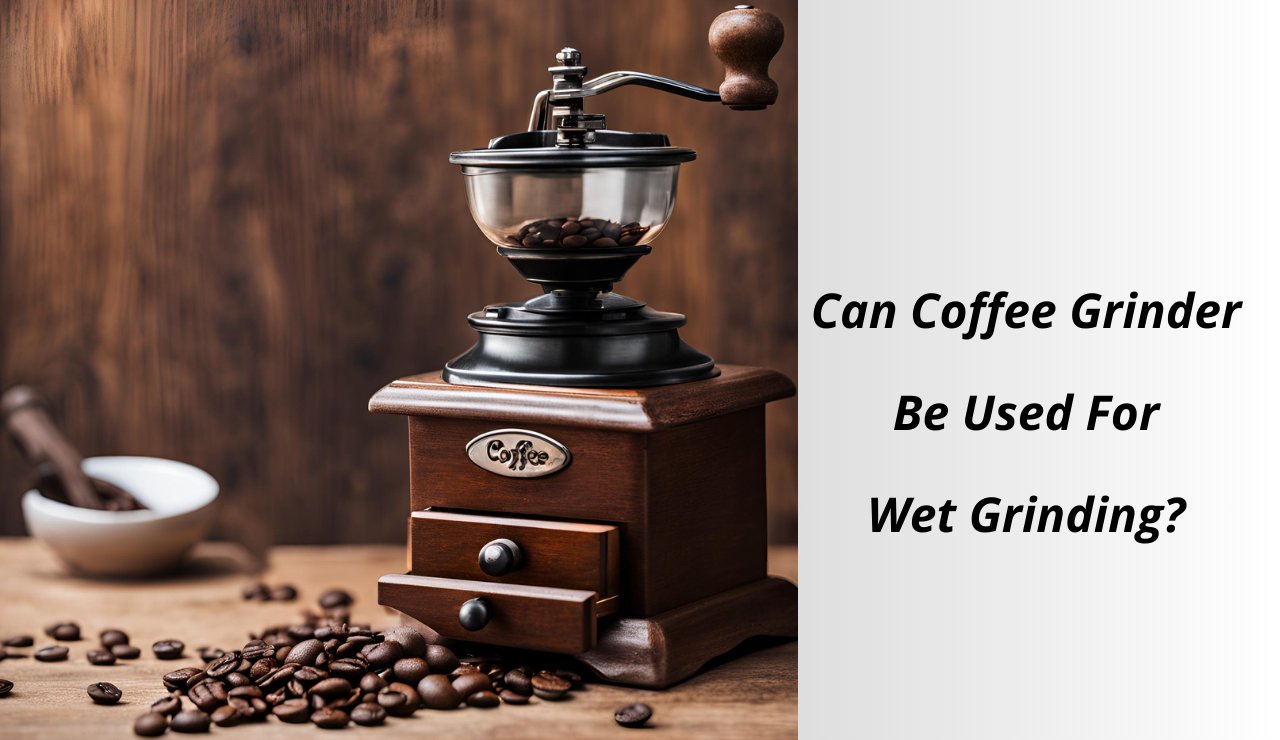Ever wondered if your trusty coffee grinder can do more than just grind beans? Imagine turning it into a multi-tasking kitchen tool! If you’ve been eyeing that grinder for tasks like wet grinding spices or making pastes, you’re not alone.
But before you dive in, let’s explore if it’s up to the job. Stick around—what you learn might save your grinder or unlock a whole new use for it!
Table of Contents
Can a coffee grinder be used for wet grinding?
You might wonder, “Can my coffee grinder be used for wet grinding?” While it’s tempting to try, coffee grinders aren’t built for wet grinding. Let’s explore why they fall short.
A. Structural Limitations
- Motor Design:
Coffee grinders are made for dry ingredients. Their motors are not sealed against moisture, so liquid can seep in, causing electrical damage or even short circuits. - Blade/Burr Sensitivity:
While the blades or burrs are sharp enough to handle dry grinding, they’re not designed for wet grinding. Wet ingredients can lead to uneven grinds or clogging. - Hopper and Container Design:
The narrow and compact design of most coffee grinders isn’t suitable for processing wet ingredients. This can cause clogs, making it difficult to achieve consistent results.
B. Material Concerns
- Corrosion Risk:
Many coffee grinders have metal components that are not rust-resistant. Exposure to moisture can lead to corrosion, reducing the grinder’s lifespan. - Plastic Components:
Coffee grinders often include plastic parts. Water can seep into these areas, damaging internal mechanisms or making the grinder unsafe to use.
C. Performance Issues
- Inefficiency:
Coffee grinders aren’t built to produce the fine, smooth texture needed for wet grinding. They often leave lumps or uneven textures in the mix. - Clogging:
Wet ingredients tend to stick to the blades and walls of the grinder, making it difficult for the machine to work effectively. This also makes cleaning a hassle. - Overheating:
When used with wet ingredients, the grinder’s motor has to work harder, causing it to overheat. This could lead to permanent damage.
Final Thoughts
While your coffee grinder is excellent for grinding dry ingredients like coffee beans, spices, or grains, it’s not suitable for wet grinding. Instead, stick to tools like wet grinders or blenders, which are designed for the job. Using the right tool not only protects your grinder but also ensures you get the best results for your recipes!
What is wet grinding?
Wet grinding is the process of mixing and grinding ingredients with water to make smooth pastes or batters. It’s commonly used in making foods like idli and dosa batter or chutneys. But can a coffee grinder be used for wet grinding? Let’s understand wet grinding better.
What Makes Wet Grinding Different?
- Texture and Consistency: Wet grinding creates a fine, smooth paste or batter by combining ingredients with water, unlike dry grinding, which produces powder or coarse particles.
- Purpose: Wet grinding is ideal for making food items like sauces, dips, or batters, while dry grinding is mostly for spices, grains, or coffee beans.
Tools Commonly Used for Wet Grinding
- Wet Grinders: Specifically designed for wet grinding tasks, they have large stones that rotate to crush and mix ingredients with water efficiently.
- Blenders: They can handle wet grinding for small quantities but may not provide the same consistency as wet grinders.
- Stone Grinders: Traditional tools often used for authentic recipes, providing excellent results for wet grinding.
While your coffee grinder is a fantastic tool for dry grinding, it’s not built for wet grinding. Using it this way can damage the motor and blades. Stick to tools meant for wet grinding to get the best results!
What Happens if You Attempt Wet Grinding in a Coffee Grinder?
Thinking about trying wet grinding in your coffee grinder? While it may seem convenient, the risks and potential damage outweigh the benefits. Let’s break down what happens if you use your coffee grinder for wet grinding and explore better alternatives.
Immediate Risks
- Grinder Jamming or Overheating:
Wet ingredients can stick to the blades and walls, causing the grinder to jam. The motor has to work harder, which can quickly lead to overheating. - Spillage of Liquid:
Coffee grinders are not sealed for wet use. Liquid can spill into the motor and other components, leading to immediate damage.
Long-term Effects
- Deterioration of Motor and Internal Components:
Repeated exposure to moisture can damage the motor and internal parts. The grinder may lose efficiency or stop working altogether. - Reduced Lifespan of the Appliance:
Using a coffee grinder for wet grinding significantly shortens its lifespan. The wear and tear caused by improper use will take a toll over time.
Potential for Safety Hazards
- Risk of Electrical Malfunctions or Shocks:
Moisture inside the grinder increases the risk of electrical malfunctions. This could cause the grinder to short circuit or even lead to an electric shock.
Alternatives for Wet Grinding
- Wet Grinders:
These are specially designed for wet grinding. They use durable stone rollers to crush and mix ingredients smoothly, making them perfect for large batches of batters or pastes. - Blenders:
Blenders work well for smaller quantities of wet ingredients. They are faster and easier to clean than wet grinders. - Food Processors:
With the right attachments, food processors can handle both wet and dry grinding. They are versatile and great for everyday use. - Mortar and Pestle:
If you need only a small amount, a mortar and pestle is a traditional yet reliable option for wet grinding.
Final Thoughts
A coffee grinder may seem like a quick fix for wet grinding, but it’s not worth the risks. Save your grinder for dry tasks and use the proper tools for wet grinding to protect your appliances and achieve the best results!

